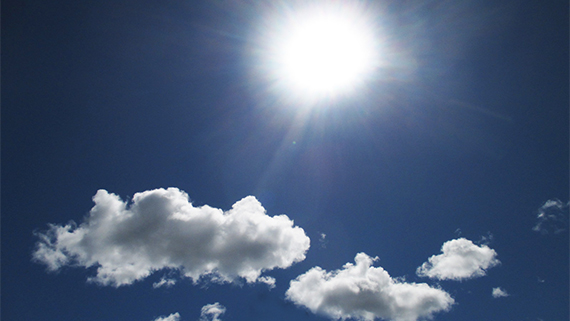Record-breaking temperatures in May

Weather records in May 2018:
Warmest May every recorded in Finland
Highest ever average temperature measured at an observation station
Most hot days in May
Exceptionally long dry period in some areas
Record sunny May in most parts of the country
According to the Finnish Meteorological Institute statistics, May was the warmest ever recorded in Finland. The average temperature of the whole country, 11.6°C, was 0.5 degrees higher than the previous record from 1963. Comparable data starts from the beginning of the 20th century. Station-specific average temperature records were also broken at several long-term observation stations. In Kumpula, Helsinki, the average temperature in May (15.5°C) exceeded the former Finnish record with as much as 1.2 degrees (Helsinki Airport, 2016).
In general, the average temperature in May was 4–5 degrees above the long-term mean value. The average temperature varied from about 15°C in the south to just below ten degrees in northern Lapland.
The highest temperature in May, 29.6°C, was measured on 15 May in Kemiö, Helsinki-Vantaa Airport, and Utti, Kouvola. The temperature record for May is 31.0°C, measured in Lapinjärvi on 30 and 31 May 1995, so the record of the highest temperature was not broken. The month's lowest temperature, -10.4°C, was measured on May 1 in Nuorgam, Utsjoki.
This May held a total of 14 hot days, that is days when the highest temperature is over 25 degrees, which is more than ever recorded in the Finnish measurement history. The previous record, 12 hot days, was from 1984. The typical number of hot days in May is three.
Exceptionally long period without rain
In most parts of the country, rainfall in May focused on the first days of the month alone. Many observation stations in the south and west measured no precipitation since 3 May. Therefore, the rainless period stretched to four weeks, which is exceptional. The long dry period increased the risk of forest fires.
The amount of monthly rainfall varied mainly between 10 and 30 mm. The amounts of rain were in many places exceptionally low. The most rain was seen at the Savenaho station in Joutsa, where the amount of monthly rainfall was 53.9 mm. The lowest amount of rainfall was measured in Kustavi, where the amount of monthly rainfall was only 4.8 mm.
There was a record-breaking amount of sunshine in the southern and central parts of the country, which enjoyed 350–400 hours of sunshine. In many places, this is more than 100 hours above the average. Lapland did not get as much sunshine, but there was still 50–100 hours more of it than on average.
Dry spring started cold and ended warm
In terms of the average temperature, the spring, that is the March–May period, was usual or slightly warmer than usual. The record warm May was compensated by the rather cold March.
In terms of precipitation, the spring was dryer than usual in most of the country. In the south-western and northern parts, a spring as dry as this is seen on average once in 10–30 years. In the eastern part of the country the level of rainfall was close to the usual amounts.
Further information:
Weather statistics for May (in Finnish): http://ilmatieteenlaitos.fi/toukokuuOnline journal Ilmastokatsaus (in Finnish): www.ilmastokatsaus.fi
Meteorologists tweet about the weather on Twitter: @meteorologit